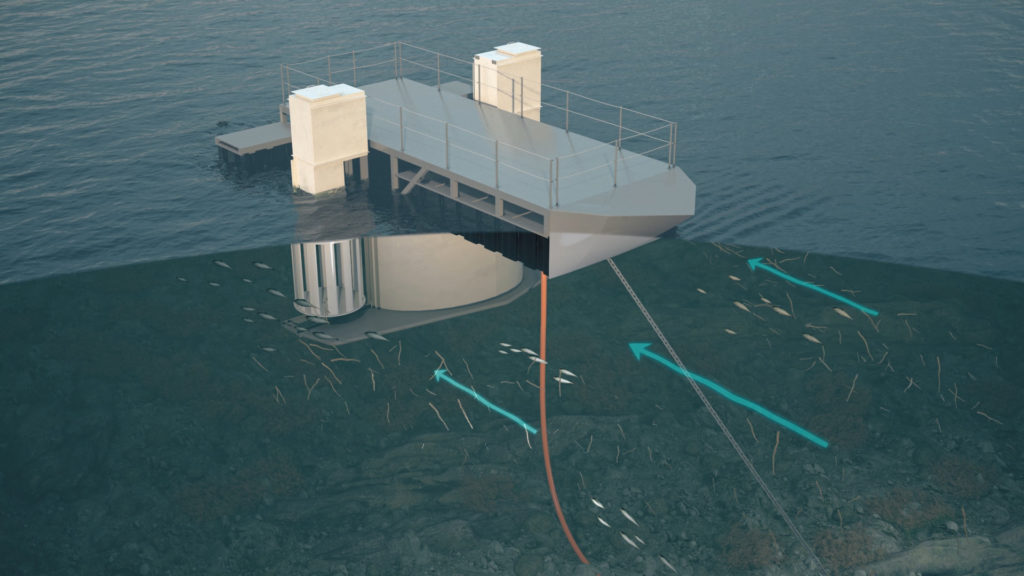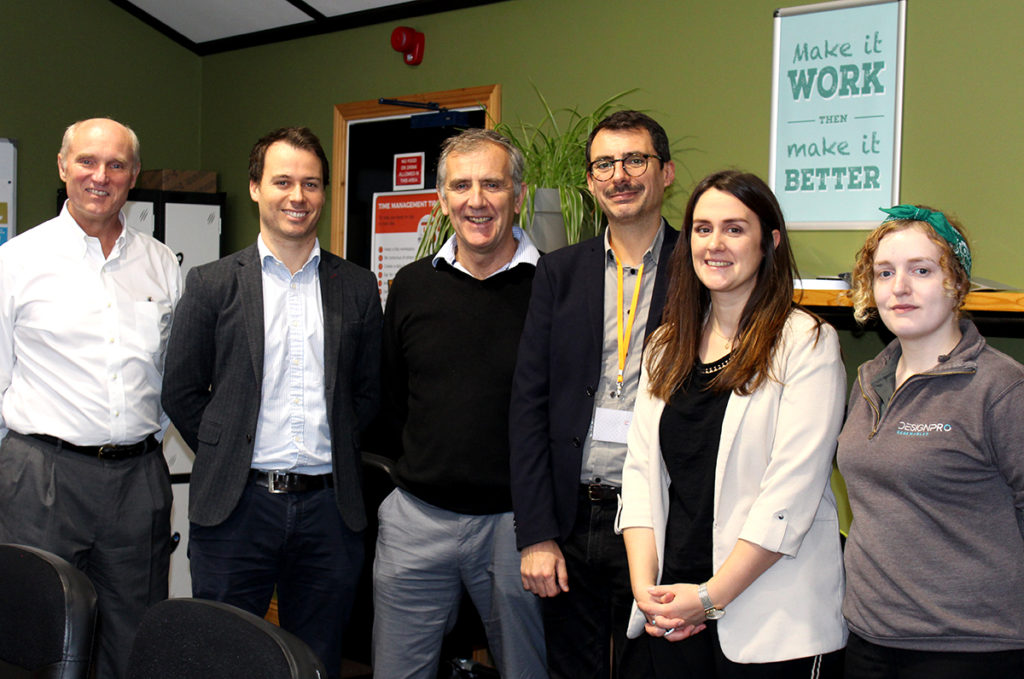When you get backing from a European Commission funding programme, on top of securing essential funding to accelerate your progress, you join a powerful network that is truly invested in you and wants to see you succeed. Sparked by a visit from the company’s assigned project officer, DesignPro looks back on its journey with the European Commission.
DesignPro Ltd is based in Limerick Ireland, established in 2004 and specialises in building automation machinery and integrating processes and robotics for production, testing and assembly lines. In 2014, the company diversified into the renewable energy space through a partnership with GKinetic Energy Ltd. and this has now grown into a dedicated start up, DesignPro Renewables, that is currently funded to develop and commercialise a range of hydrokinetic turbines that can generate clean, predictable energy from flowing water.
On Wednesday 2nd October 2019, DesignPro had the pleasure of being visited by Marco Rubinato, a Project Advisor at EASME (Executive Agency for Small and Medium-sized Enterprises) with the European Commission. Mr. Rubinato is the assigned project officer to DesignPro’s ongoing H2020 Phase 2 funded project ‘DP Renewables’, project number 766499, and it was a huge honour and a great day for the team to finally meet their project officer in person who has been so supportive and helpful throughout the entire experience with H2020 and EASME.

Image 1: Innovation Manager Vincent Mc Cormack and Electrical Engineer Ihor Fomenko explain the unique Power Take Off (PTO) system that has been developed as part of the project work.
The visit entailed presentations from management and a full facility tour, meeting key team members along the way. A number of key components of the larger 60kW turbine were on display and one of the past, smaller turbine models was there to demonstrate scale and the core concept.

Image 2: ‘Blades of Glory!’ The team demonstrate the scale of one of their 60kW turbine blades. From left to right: Ihor Fomenko, Roisin Mc Cormack, Redmond McDonnell, Marco Rubinato and Vincent Mc Cormack.
DesignPro first began their journey to securing European Commission (EC) funding in 2014, so it has been a long road and one that has been extremely worthwhile. When first considering applying for funding, the company reached out to their National Contact Point (NCP) Sean Burke who was, and continues to be, a great support to the company. There is a European-wide network of these ‘contact points’ and it is strongly recommended to any companies considering going down the EC funding route for the first time to reach out to your nearest contact point for an initial discussion.
Having agreed that there was certainly plenty of potential and a solid, highly innovative idea, the team committed to investing the time and resources into preparing a Phase 1 SME Instrument application (now known as the EIC Accelerator pilot) and were successful on the 2nd submission attempt. Following on from the Phase 1 project, the team submitted a Phase 2 application for a much larger €2.7 million project that would see the development of a range of hydrokinetic turbines. Again, they were successful on their second attempt and ranked the #1 highest scoring application in their topic for that round. In June 2017 DesignPro was one of only two Irish SME’s acknowledged for reaching the pinnacle of European research, being awarded the status of a ‘Champion of EU Research’ an honour which generated a huge amount of interest and press for the company resulting in enquiries and further opportunities.

Image 3: Roisin McCormack, Sales & Marketing Manager at DesignPro accepting the ‘Champions of EU Research’ awarded to DesignPro from Julie Sinnamon, CEO of Enterprise Ireland (June 2017).
Roisin Mc Cormack, Sales & Marketing Manager at DesignPro had the following to say on the application process:
“If you are truly committed to your idea and developing the business model as opposed to just being concerned with getting funding then the process is invaluable. We held weekly strategy meetings while preparing our Phase 2 application which pushed us to really test and scrutinise our assumptions. We made a few huge pivots during those months, resulting in a really solid business model that we were confident in and could back up. At the end of that process, even if we didn’t get the funding, we had already developed something of real value to the company”.

Image 4: ‘Where it all began’, the team show Marco one of the very first prototypes that DesignPro built with GKinetic to show just how far they have come.
Thankfully DesignPro were successful thanks to their commitment and hard work and they are now in the final stages of their Phase 2 project having deployed a full scale 25kW turbine at the SEENEOH test site in Bordeaux France with their 2nd larger 60kW turbine in the final stages of build.

Image 5: Graphic of the optimised 25kW design.

Image 6: The 25kW turbine deployed at the SEENEOH test site in the river Garonne, Bordeaux France.
Marco had the following to say following his visit to DesignPro:
“Having visited many projects funded by the EIC (European Innovation Council), I still remain surprised by the high quality of our beneficiaries and of their innovation. DesignPro, made up of their Automation and Renewables divisions, demonstrated they have everything needed to be a success story and I am sure we will meet again to celebrate futures achievements”.

Image 7: Meeting key team members, from left to right Bart Bonsall, Redmond Mc Donnell, Vincent Mc Cormack, Marco Rubinato, Roisin Mc Cormack and Kyro Keown.
DesignPro look forward to the final months of what has been a really exciting, ambitious and inspiring project. Interest and enquiries into the product mean that DesignPro now have a large variety of commercial opportunities available to them with regards scaling up to the next stage that will involve pilot, commercial demonstrations. Encouragement and support from the European Commission team has been instrumental to the successes achieved to date and the team are now actively lining up the next phase with regards investment and partners for the technology’s development beyond January 2020.

